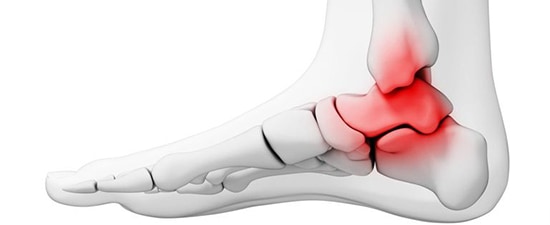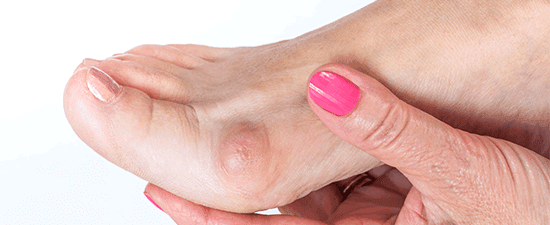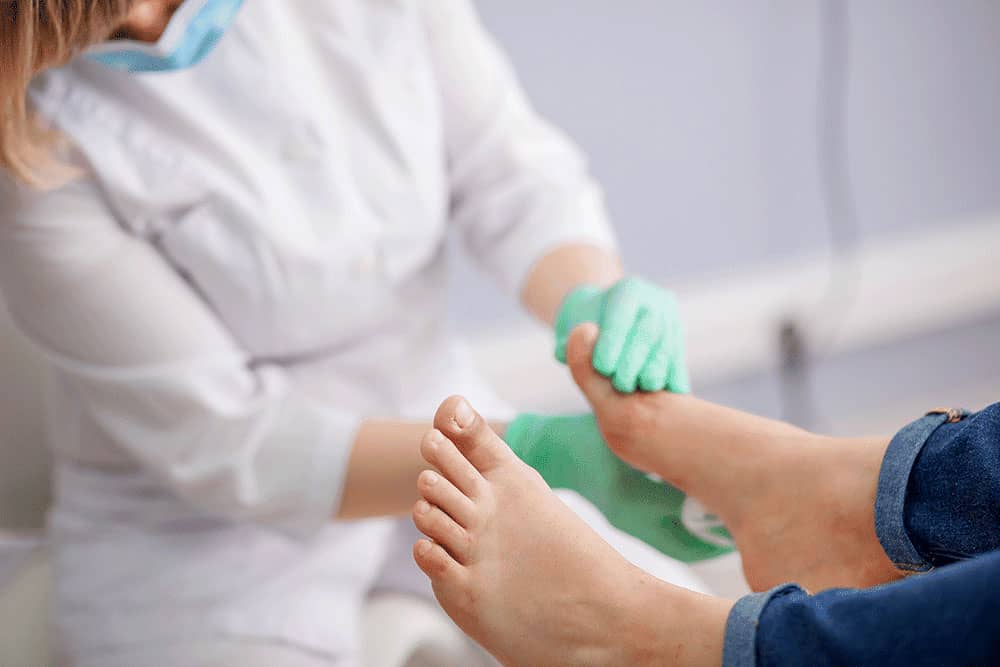- Home
- Foot & Ankle Conditions
- Cysts
- Plantar Fibroma Cysts
Plantar Fibroma Cysts: symptoms, causes and treatments

What's a Plantar Fibroma Cyst?
A plantar fibroma is a knot of connective tissue in the arch of your foot, buried deep within the plantar fascia (the band of tissue that runs from the heel to the forefoot along the bottom of the foot). Also known as Ledderhose disease, a plantar fibroma nodule is made up of the same type of tissue that is found in ligaments.
A plantar fibroma is slow-growing and may develop on the sole of one or both feet. Luckily, these tumors are non-cancerous.
However, the mass usually will not go away without treatment. It's critically important that you have a proper evaluation of cysts that you discover to eliminate a more serious medical condition (such as cancer).
The condition is diagnosed most in the middle-aged and elderly population. Risk factors include diabetes, chronic liver disease, and epilepsy.
- What are the symptoms of a plantar fibroma cyst?
- What causes plantar fibroma?
- How to diagnose plantar fibroma
- What are plantar fibroma treatment options?
- University Foot & Ankle Institute (UFAI) is the best choice for plantar fibroma treatment
- How serious is plantar fibroma?
- Is it OK to massage plantar fibroma?
- Is walking bad for plantar fibroma?
- What will happen if you don't get rid of a plantar fibroma?
- Is plantar fibroma hereditary?
-
Foot and Ankle Surgeon at University Foot and Ankle Institute
Dr. Charles Kelman, DPM, is Board Certified by the American Board of Podiatric Surgery, as well as a Fellow of the America’s College of Foot and Ankle Surgeons. After attending California College of Podiatric Medicine, Dr. Kelman took his residency at Monsignor Clement Kern Hospital in Warren, Michigan.
Dr. Kelman, who entered into practice in 1980, specializes in forefoot surgery, sports medicine and rheumatology. He has volunteered as a Clinical Instructor at the Northridge Family Practice Residency Program since 1989. Dr. Kelman also donates his time at the Westminster Free Clinic.
Read Our Blog Articles About Cysts and Warts
 Dr Franson is a wonderful doctor he really cares about the health of his patients and really listen to the needs of them. I wo...Christina V.
Dr Franson is a wonderful doctor he really cares about the health of his patients and really listen to the needs of them. I wo...Christina V. Overall, it was a great experience. I've been coming to Dr. Kellman for about a year and he and his staff are very helpful.Vanessa W.
Overall, it was a great experience. I've been coming to Dr. Kellman for about a year and he and his staff are very helpful.Vanessa W. ExcellentDebasish M.
ExcellentDebasish M. Everyone was friendly and professional.Victor L.
Everyone was friendly and professional.Victor L. Very efficient and an excellent serviceHorwitz J.
Very efficient and an excellent serviceHorwitz J. Chaos in the office checkin. We weren’t forewarned about the iPad data collection. That made me late for a following appointmen...Carl C.
Chaos in the office checkin. We weren’t forewarned about the iPad data collection. That made me late for a following appointmen...Carl C. Dr Nalbandian is an exceptional doctor and person. The staff respectfully & compently delt with an issue I had regarding a prev...Karen M.
Dr Nalbandian is an exceptional doctor and person. The staff respectfully & compently delt with an issue I had regarding a prev...Karen M. Amazing all around what a profession doctor and staff thanks Dr. Baravarian and your team!!!!Danny H.
Amazing all around what a profession doctor and staff thanks Dr. Baravarian and your team!!!!Danny H. Pleasant office with a friendly staff.
Pleasant office with a friendly staff.
Wasn’t keep waiting long for my appointment. Dr. Feldman was friendly, professional and ...Lenore K. Visiting the office is a pleasurable occurance.Thomas J.
Visiting the office is a pleasurable occurance.Thomas J. Dr Kelman and his staff are always wonderfully caring and respectful to my father who has Alzheimer's dementia.Erland E.
Dr Kelman and his staff are always wonderfully caring and respectful to my father who has Alzheimer's dementia.Erland E. Thank you for being there for your patients.Dieter B.
Thank you for being there for your patients.Dieter B.
-
 Listen Now
Expert Insights On Treatment Options For Cystic Lesions Of The Talus
Read More
Listen Now
Expert Insights On Treatment Options For Cystic Lesions Of The Talus
Read More
-
 Listen Now
11 Common Foot Lumps and Bumps and What To Do About Them
Read More
Listen Now
11 Common Foot Lumps and Bumps and What To Do About Them
Read More
-
 This foot condition is the new back pain — it’s everywhere. UFAI in the News.
Read More
This foot condition is the new back pain — it’s everywhere. UFAI in the News.
Read More
-
 Listen Now
What is Synovial Sarcoma? A Rare and Dangerous Cancer
Read More
Listen Now
What is Synovial Sarcoma? A Rare and Dangerous Cancer
Read More




